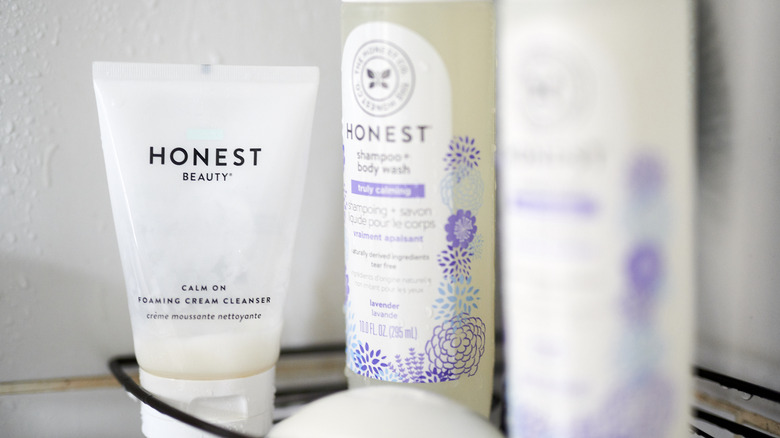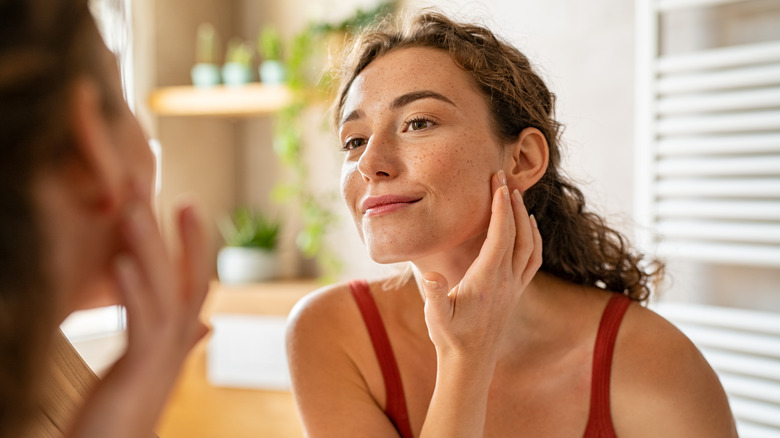Why You Need To Be A Conscious Shopper When It Comes To Beauty Products
Clean beauty has slowly trickled into the mainstream as more consumers become conscious of what they put into and on their bodies. Unfortunately, the labels aren't always reliable and shoppers have to wade their way through a sea of green-washed marketing jargon. To find high-quality products that don't contain harmful ingredients, you'll need a keen eye and a few of these tips.
At the moment, there is little regulation of what beauty companies can put into their products, meaning that some ingredients can be hazardous to your health. By looking out for certain ingredients and checking lists from various organizations, you can stay a step ahead and find the makeup you love. Because the United States is less involved in regulating consumer goods, many clean beauty experts look to the European Union for their standards, Mindbodygreen reports. "The E.U. follows the precautionary principle, which means that they are not going to let a chemical onto the market until they have received a certain amount of data that it's safe," says legislative attorney Melanie Benesh, who works for the Environmental Working Group. "In the U.S. it's the reverse — so we have more of a philosophy that we assume something is safe until proven otherwise. So in some ways, we're the Guinea pigs."
Currently, the European Union has 1,400 chemicals banned from consumer products while the US has 20. While there's some margin of error in this number, it still shows just how many chemicals could be in your skincare bottles.
The cosmetics industry produces 120 billion plastic containers each year
Beyond containing harmful chemicals, many beauty products are damaging the environment. The Earth is struggling with the number of plastic containers that are currently present on the planet, and they're only continuing in their production. Indeed, Harper's Bazaar reports that nearly 120 billion units of plastic come from the beauty industry alone every year — most of it isn't recyclable either. By understanding the life cycle of your favorite products, you can better keep an eye out for the environment.
If you're curious about how one of your favorite skincare or makeup brands stack up in this regard, you can do some research to see how they're combatting this problem — or not. "Start with the brand's website — dig deep and immerse yourself in their process. If you feel that certain questions aren't being answered, then ask them. Use social media to find out more — the unedited opinion of other consumers is usually out of the brand's control and will be raw and honest," Anna-Marie Solowij, co-founder of Beauty Mart, recommends to Byrdie.
Other sources such as the Environmental Working Group dive into the various chemicals present in your products. Download their app to check which items you need to be careful applying and recycling. Furthermore, Byrdie suggests focusing on which aspects are important to you — whether that means your main concern is eco-friendly packaging or non-toxic ingredients.
Protect yourself and the planet by finding truly clean products that align with your values.

